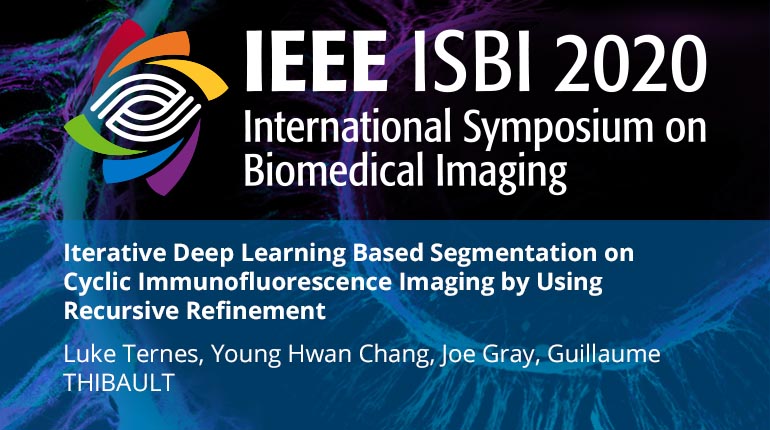
Already purchased this program?
Login to View
This video program is a part of the Premium package:
Recursive Segmentation Refinement Without Manual Annotations
- IEEE MemberUS $11.00
- Society MemberUS $0.00
- IEEE Student MemberUS $11.00
- Non-IEEE MemberUS $15.00
Recursive Segmentation Refinement Without Manual Annotations
Most deep learning segmentation architectures require a large amount of training data, comprised of thousands of manually annotated images. Despite being time consuming to create, manual annotations are more accurate than algorithmic segmentations and, therefore, result in better training. Here we describe a strategy that utilizes iterative learning and ground truth refinement improve segmentations without using manual annotations. Alternating Cyclic Immunofluorescent (Cyclic-IF) stains and averaging prediction masks at each iteration are implemented to reduce the propagation of errors through the models. Segmentation performed using this strategy reaches the accuracy of manual segmentation after a few iterations. Using this strategy can reduce the number of manual annotations needed to produce accurate segmentation masks.
Most deep learning segmentation architectures require a large amount of training data, comprised of thousands of manually annotated images. Despite being time consuming to create, manual annotations are more accurate than algorithmic segmentations and, therefore, result in better training. Here we describe a strategy that utilizes iterative learning and ground truth refinement improve segmentations without using manual annotations. Alternating Cyclic Immunofluorescent (Cyclic-IF) stains and averaging prediction masks at each iteration are implemented to reduce the propagation of errors through the models. Segmentation performed using this strategy reaches the accuracy of manual segmentation after a few iterations. Using this strategy can reduce the number of manual annotations needed to produce accurate segmentation masks.
 Cart
Cart Create Account
Create Account Sign In
Sign In





